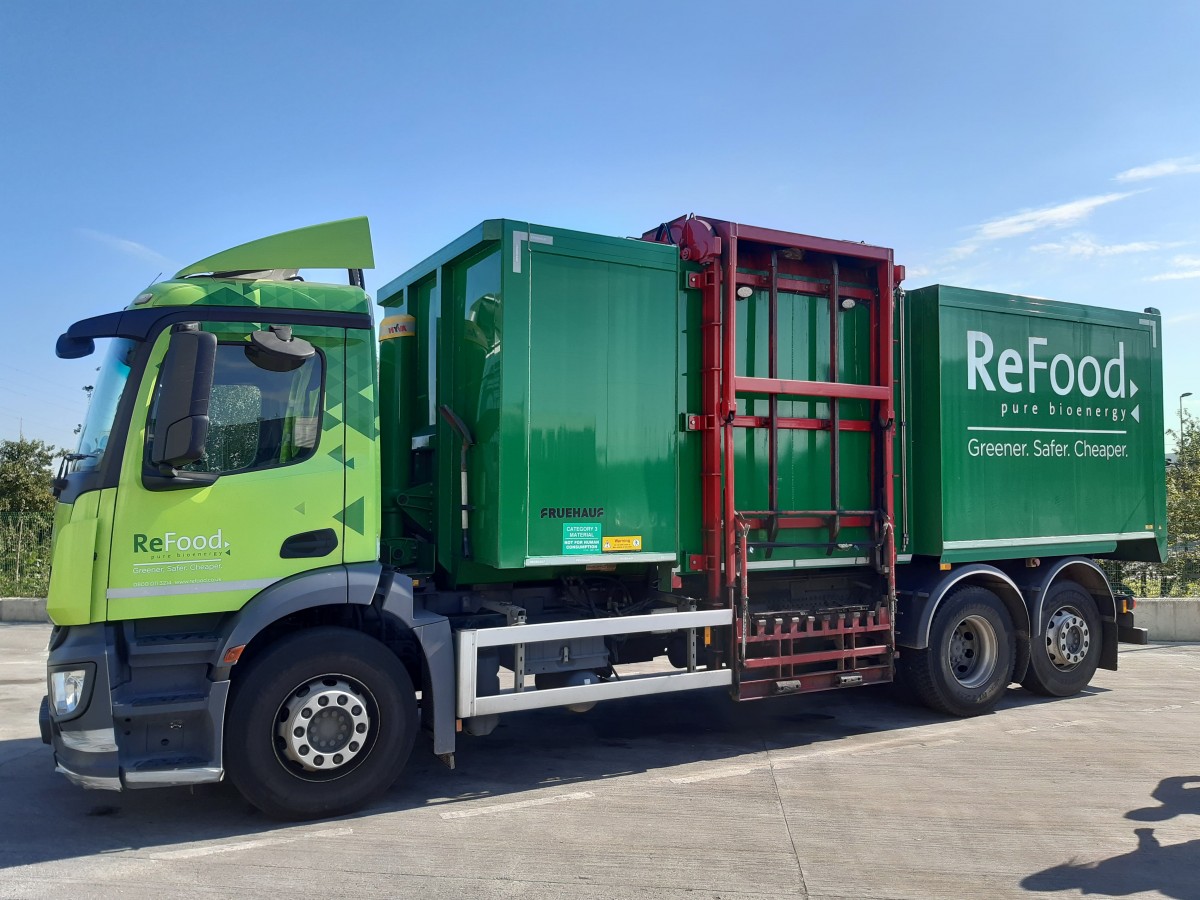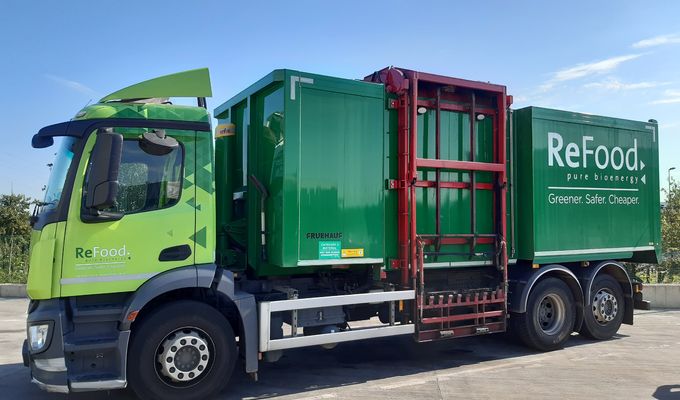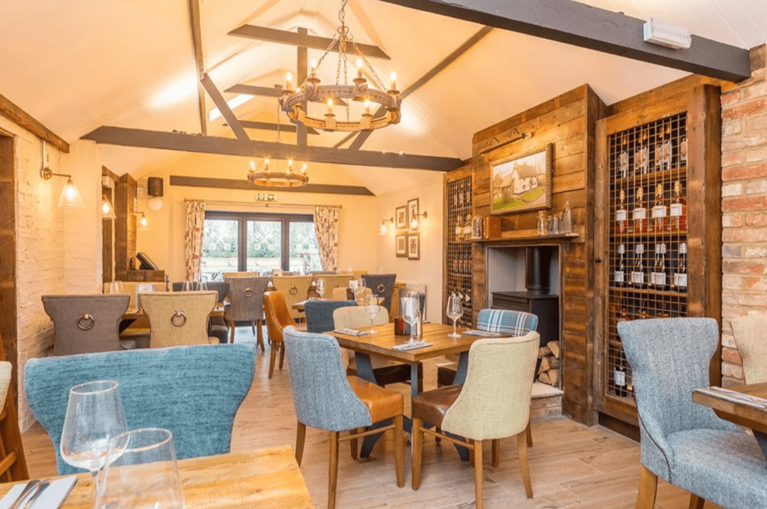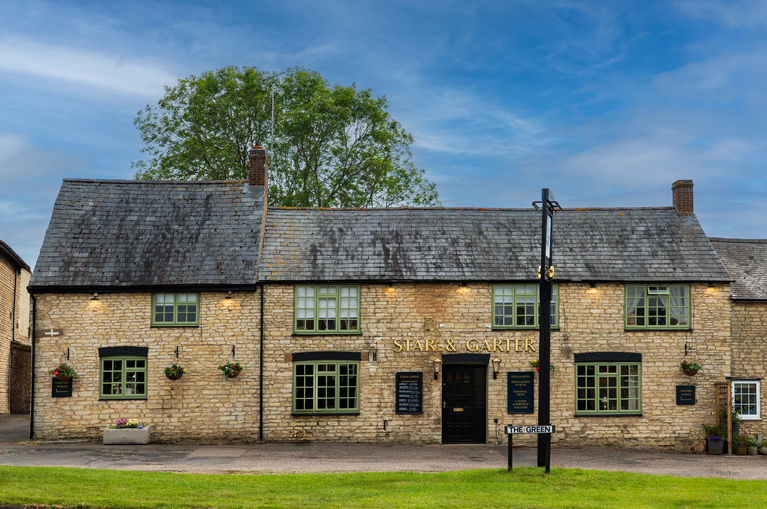“Waste not, want not”, as the old saying goes. But what happens to the food we waste? No matter how careful we at Wells & Co. are to minimise food waste, there will inevitably be leftovers from our guests’ plates, breakfast buffet items that don’t get snapped up and the odd chicken breast that goes past its Use By date in our pub kitchens. So, where do these waste food items end up?
The good news is that ReFood, the UK’s only fully integrated food chain supplier, ensures that this food waste finds a happy new home in sunny Dagenham. Their plant specialises in anaerobic digestion, a natural process that biologically breaks down organic material to generate large amounts of biogas – a combination of methane and carbon dioxide. It works in a similar way to a compost heap, only on an industrial scale.

(Pic: ReFood Truck)
We were lucky enough to visit the ReFood plant last autumn, and one of the features that impressed us most was the technology to remove non-food items such as packaging from the food waste they receive. Picture a giant salad spinner with lots of large blades to chop everything up; the food waste is then forced through a series of filters, leaving the packaging behind. This is great news for our pubs – whilst we shouldn’t pile our food waste bins full of packaging, it can be a real time-saver during a busy shift to clear a customer’s finished plate of food without having to stop and pick out ketchup sachets, used napkins and the like.
Once the food waste is prepped, the process that follows is not a million miles from brewing beer (apologies to any of our Brew Crew who are tearing their hair out as they read this). The waste is pasteurised, cooled naturally, then transferred to a mixing tank and held for three days to ensure a smooth product gets transferred to the digestors. Each digester tank is filled with 3,500 tonnes of blended organic material. Over the next 30 to 35 days, it is broken down by bacteria to produce methane. Gas is collected from the top of the digesters and passed through a biological scrubber to remove any hydrogen sulphide molecules before moving on to the final stages of production.
This end product, known as ‘biogas’, is where the magic really happens. Our food waste gets pumped into the National Gas Grid! Our leftover potatoes and pizza dough end up helping to heat homes; the ReFood plant produces enough gas to supply up to 12,600 homes per year.
Once the biogas process has been completed, the remaining liquid is transformed into bio-fertiliser for farming and agriculture. A much better end result for our food waste than a dirty landfill site, I’m sure you’ll agree, and it shows why it’s so essential that we put the right things in the right bins in our pubs and at Brewpoint – it really does make a difference.
Of course, reducing our food waste is still a priority for Wells & Co. – that’s why we’re working to install food waste bins in all of our Managed sites, and have introduced the Too Good To Go app to help transform your leftover meals and beer into extra income instead of extra waste – but it’s nice to know that those runner beans you scraped into the green bin after today’s lunch shift will go to good use, isn’t it?
(You should still eat your greens, though.)
Related: How can you reduce your wastage at Home
Latest News
-
Cox’s Yard Reopens Following Stunning £355k Refurbishment
2nd July 2025The £355k upgrade has elevated the pub experience for locals and visitors alike – all...
-
Double award-winning pub The Cross Keys in Woolstone
2nd July 2025The Cross Keys in Woolstone is celebrating a double victory this year after scooping ‘Best Restaurant’...
-
The Star & Garter Reopens at the heart of Chelveston
13th June 2025After more than a year of silence, the heart of Chelveston will once again be alive with conversation,...





